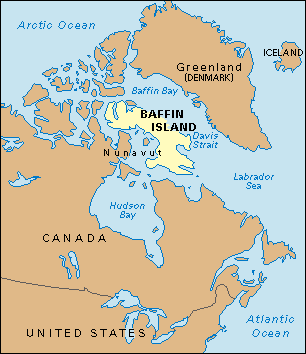
Geochemists think they have discovered lavas that derived directly from a region of primordial mantle, unchanged since the Earth formed. Harriet Jarlett* reports.
Geoscientist Online 2 November 2010
Scientists have long believed that any traces of the Earth’s primordial geochemistry were destroyed long ago by the planet’s many geological processes, which differentiate and recycle Earth materials, washing them clean of all traces of their origins. However, new evidence from rocks in the Canadian Arctic suggests that some samples may still provide clues to the Earth’s earliest history.
Matthew Jackson (Boston University) and co-authors
1 think they have identified clear isotopic evidence that Cenozoic lavas from Baffin Island and West Greenland, Canada, derive from a deep Earth reservoir that has remained inaccessible to the Earth’s washing-machine processes for four and a half billion years. Their work involves the first ever combined analysis of helium, lead, neodymium and hafnium on these lavas, which are mid ocean-ridge basalts (MORB) erupted during the opening of the North Atlantic.